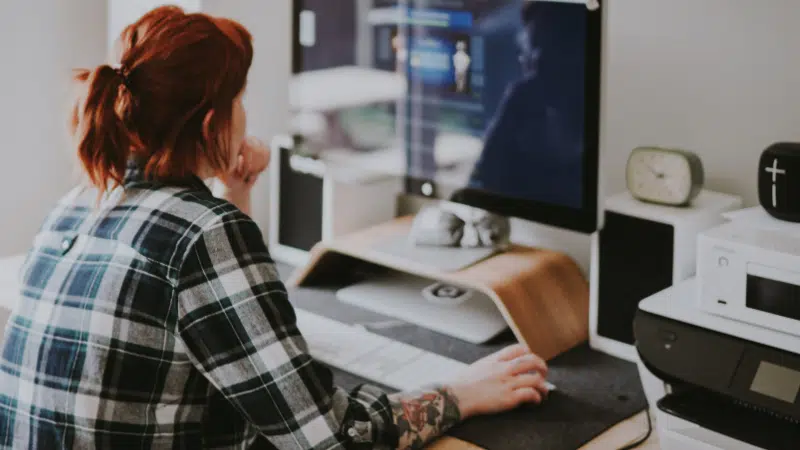Your music is one of your most important assets. Make sure it’s properly protected! One of the smartest things you can do today is copyright your music with the U.S. Copyright Office. In this post, we’ll take a closer look at the benefits of copyrighting your music and how to do it the right way.
Why You Need To Copyright Your Music And How To Do It
Here’s the rundown…
A copyright exists the moment a work is created. It keeps your original work, like songs, books, articles, art, photographs and more, safe from being used without your consent. As a copyright owner, you have the exclusive rights to authorize others to act on your behalf and/or to perform the actions below:
- Reproduce a work
- Create derivative works (e.g. a film adaptation of a book)
- Distribute the work for sale, rental, lease, or lending
- Perform or display the work publicly
- Incorporate the work with visual images, if applicable
- License others to do any of the things listed above
Think of registering your copyrights as a form of insurance. You wouldn’t wait until something bad happens to get an insurance policy!
What kinds of benefits are you are entitled to?
Once you register your works with the U.S. Copyright Office:
- There is now an established public record of the ownership of your original work.
- You receive a certificate as physical proof of your registration.
- Registration gives you the option to file an infringement suit, if necessary. (At the court’s discretion, this could yield you somewhere between $750 and $30,000 per work, and may even increase up to $150,000 per work, if the infringement was determined to be deliberate.)
- You may also be eligible to recoup attorney’s fees from litigation.
- Registration is considered factual evidence in a court of law if filed within 5 years of publication.
- You can record the registration with the U.S. Customs Service for protection against the importation of infringing copies of your work.
It’s mandatory to register your copyrights before you can file an infringement lawsuit. Recently, cases have been dismissed for failing to register beforehand. You may be entitled to statutory damages of $150,000 per willful infringement, but only if the infringement began after you registered.
“Can’t I just mail myself a copy of my work as proof of my ownership?”
You may have heard that you can establish the date of creation for the work you created by mailing yourself a copy and keeping it in a sealed envelope (often called a “poor man’s” copyright). While historically this has been very popular among creators, what’s most important to note here is that there is no provision in copyright law regarding “poor man’s” copyright, and it is not a substitute for registering your works with the U.S. Copyright Office.
- “Poor man’s” copyrights are not granted the same protections and rights.
- The difference is critical, particularly when it comes to your ability to enforce your rights legally!
In other words, that unopened envelope you’ve tucked away that contains a copy of your work is useless. (Sorry!)
——
Want to learn more?
What You Need to Know About Copyrighted Music on Twitch
Copyright Infringement in the Music Industry
How to Trademark Your Artist Name
Which Legal Entity Is Right For Your Music Business?
——
Here’s the good news!
You can use Cosynd to register your works with the U.S. Copyright Office. As a Symphonic client, you can protect your music, videos, images, and more in minutes for only $25 (plus federal filing fees) per registration application.
When you use Cosynd to register your copyrights, you don’t have to:
- Think about what application type you should be using.
- Think about what work type category that applies to you.
- Enter repetitive data over and over.
- Read through lengthy instruction documentation to complete your application.
- Worry about making any errors.
Pro Tip: In addition to registration, Cosynd is the only solution that can also help you simultaneously manage all of your split sheets, work for hire agreements, and other copyright ownership agreements with one easy to use account.
——
Want to learn more about protecting your copyrights?
Follow Cosynd on socials below:
Instagram // LinkedIn // Facebook
——
Still want to register on your own? — Here are some tips:
- Read the Copyright Office’s guidelines carefully to determine which application you should use.
- At the time of posting this, most registration applications cost $45, $65, or $85 per application depending on your registration type.
- Fill out an application form with the US Copyright Office.
- If you are filing a paper form, the application fee is $125.
- Select the correct category of work type for your registration. (You may need to research which work type is most applicable to your work.) For example, song registrations can fall under different categories.
- Research the correct way to list multiple works on a single application. (Multiple works can be submitted on a single application if the standards for authorship, ownership, publication, and creation are met.)
- Provide as much detailed information as possible for authors, claimants, and transfers of ownership (if applicable).
This can be a time consuming process if you don’t have all of the required information ready to go before you begin. Take your time, be prepared, and you’ll be good to go.
Good luck!




One Comment
Comments are closed.